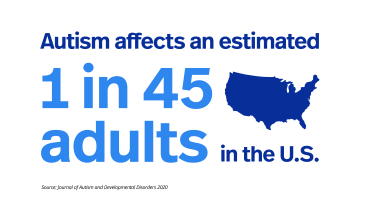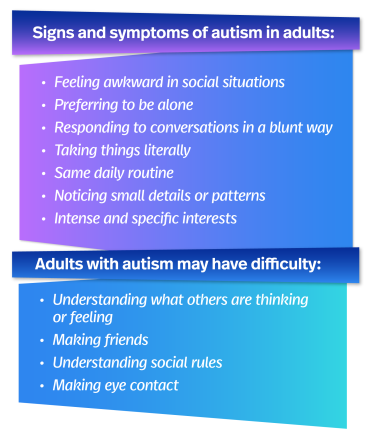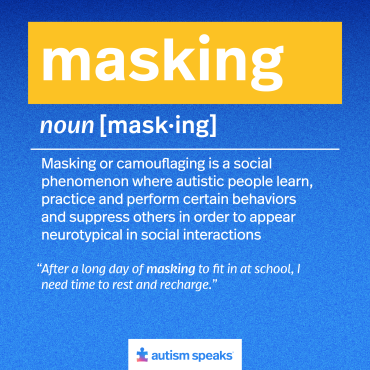Signs of autism in adults
1 in 45 adults in the U.S. are diagnosed with autism spectrum disorder (ASD). While society is much more aware of autism today than ever before thanks to improved public health outreach and increased screening, advocacy and awareness efforts, there are likely many adults with autism who never received a diagnosis or were misdiagnosed.
You may have spent your entire life not recognizing the signs of autism or not realizing that some of the issues and feelings you have dealt with were related to autism. If you suspect you may be autistic or you know an adult who may be on the spectrum, learning about the common signs of autism is the first step to understanding whether you or your loved one may have undiagnosed ASD.
Common characteristics of autistic adults
The hallmarks of autism are challenges with social communication skills and restricted and repetitive behaviors—and this is no different in adults. Below, you can find a list of some signs and symptoms of autism in adults.
Note: You may not display all of these characteristics. As you age, you may experience changes in your behavior and interests. Additionally, a major life change, including transition in and out of college, job switches or change in family status (marriage/divorce, birth of children, loss of parent), can result in a change in these symptoms. The existence of co-occurring conditions like anxiety and ADHD might also affect the manifestation of your autism.
Social interactions
- Feeling awkward in social situations
- Having difficulty understanding what others are thinking or feeling
- Preferring to be alone
- Difficulty making friends
- Having difficulty understanding social rules
Verbal and nonverbal communication
- Difficulty making eye contact
- Responding to conversations in a blunt way
- Taking things literally
Repetitive and/or restrictive behaviors
- Having the same routine every day
- Noticing small details or patterns that peers wouldn’t
- Having very intense and specific interests
Masking in autistic adults
Many autistic adults choose to mask, or camouflage, their autism symptoms. Research shows that autistic people may engage in masking because they want to fit in, be accepted and avoid drawing attention to themselves in social situations. Others resort to masking as a means to avoid bullying, maintain friendships and succeed at work and school.
It’s possible to mask your autism without even realizing it. For some people, masking looks like adopting more “subtle” stimming behaviors, like using a fidget spinner instead of flapping their hands. Some might adopt a whole different persona, imitating the speech and body language of others during social interactions. Some force themselves to make eye contact or be more expressive with their facial expressions, even if doing so feels uncomfortable or unnatural.
While masking may help some autistic adults navigate social situations, jobs and relationships, research shows it can have negative effects on mental health. Some people find masking draining and exhausting, while others report feeling isolated and misunderstood as a result of their efforts to mask their autism.
Autism is part of who I am
- Temple Grandin
Related resources
Next steps to an autism diagnosis
- Read about autism diagnosis in adults
- Download our Adult Diagnosis Tool Kit
- Learn from Dr. Cathy Lord what to expect when getting an autism diagnosis as an adult
- Find local providers and autism services in your area
Contact the Autism Response Team
Autism Speaks' Autism Response Team can help you with information, resources and opportunities.
- In English: 888-288-4762 | help@autismspeaks.org
- En Español: 888-772-9050 | ayuda@autismspeaks.org



